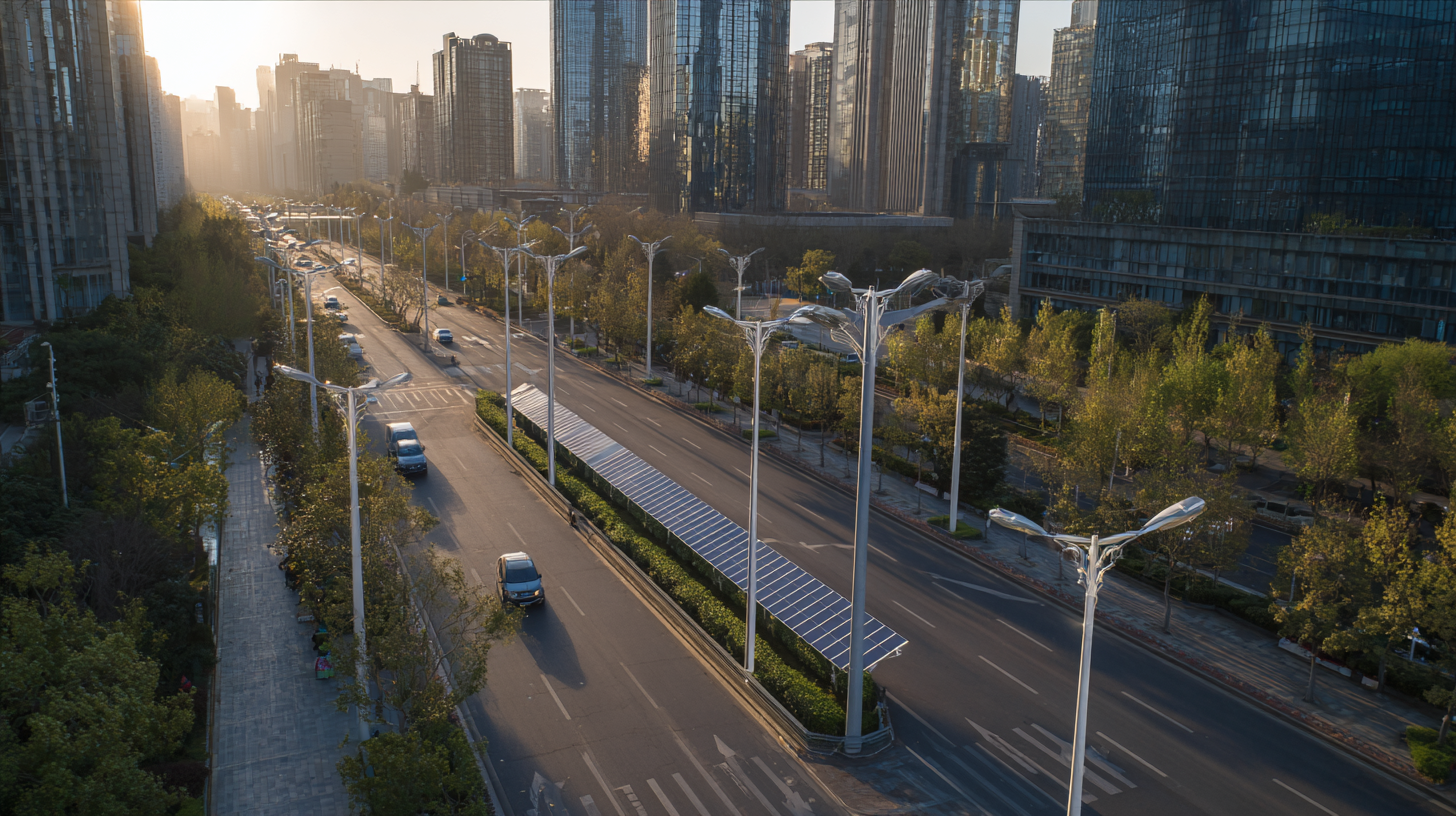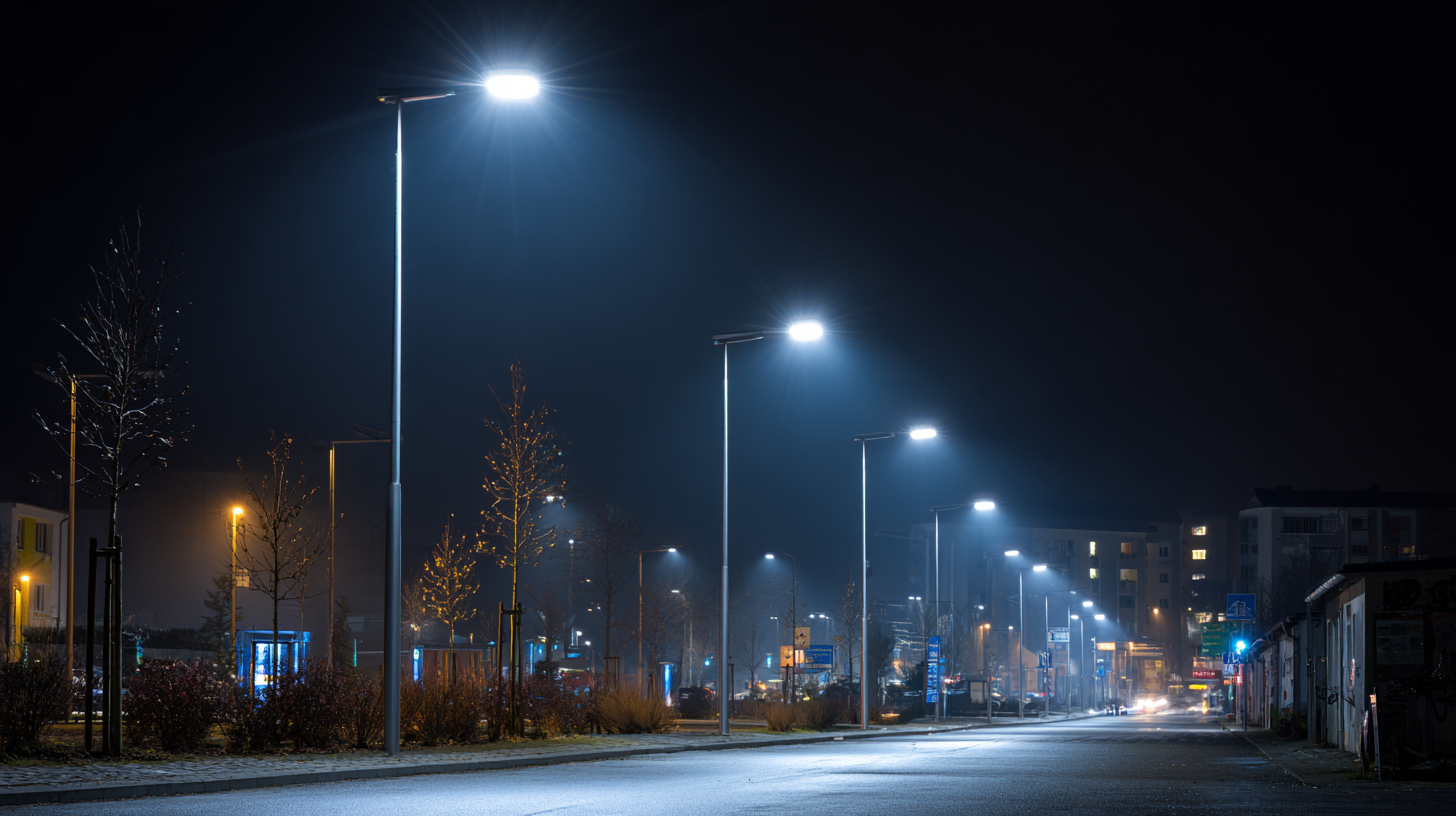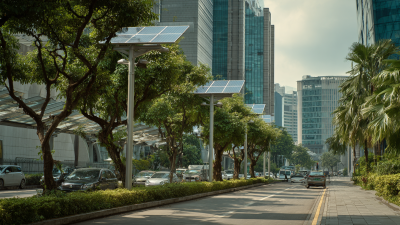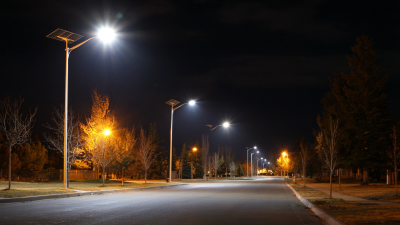Transforming Urban Lighting: The Rise of Solar Street Lamps and Their Impact on Energy Savings
As cities around the world grapple with rising energy demands and the pressing need for sustainable solutions, the adoption of solar street lamps has emerged as a transformative trend in urban lighting. These innovative fixtures harness solar energy to provide efficient, cost-effective illumination while reducing reliance on conventional electricity sources. This shift not only leads to significant energy savings, but also contributes to a decrease in carbon emissions, making urban spaces greener and more sustainable. Moreover, solar street lamps offer improved safety and visibility at night, enhancing community well-being.

As cities explore the potential of this technology, it is essential to understand the various aspects of implementing solar street lamps, from design considerations to maintenance practices, ensuring a successful transition towards a more eco-friendly urban environment. In this guide, we will delve into practical tips and strategies for integrating solar street lamps into urban infrastructure, highlighting their benefits and addressing common challenges faced by cities during this modernization process.
The Shift Towards Renewable Energy: Understanding Solar Street Lamps
The shift towards renewable energy has significantly influenced urban infrastructure, particularly in the realm of street lighting. Solar street lamps, powered by photovoltaic cells, harness the sun's energy to provide illumination, thereby reducing reliance on traditional grid power. This transition not only addresses the pressing need for sustainable energy solutions but also contributes to substantial financial savings for municipalities. The initial investment in solar technology often pays off quickly through lower energy bills and reduced maintenance costs, as these systems generally have longer lifespans than conventional lighting.
Moreover, solar street lamps enhance urban safety and aesthetics while minimizing the environmental footprint. The integration of solar technology fosters a cleaner urban landscape by decreasing carbon emissions associated with fossil fuel energy sources. As cities increasingly adopt solar street lamps, they contribute to the global movement towards renewable energy, paving the way for more innovative solutions that prioritize both efficiency and sustainability. This growing awareness and implementation reflect a broader commitment to addressing climate change and promoting the health of urban ecosystems.
Transforming Urban Lighting: The Rise of Solar Street Lamps and Their Impact on Energy Savings
| City | Number of Solar Street Lamps | Annual Energy Savings (kWh) | Reduction in CO2 Emissions (tons) | Initial Investment (USD) | Payback Period (Years) |
|---|---|---|---|---|---|
| City A | 1500 | 1,200,000 | 240 | 2,000,000 | 1.67 |
| City B | 2000 | 1,800,000 | 360 | 2,500,000 | 1.39 |
| City C | 2500 | 2,500,000 | 500 | 3,200,000 | 1.28 |
| City D | 1000 | 800,000 | 160 | 1,500,000 | 1.88 |
Evaluating the Economic Benefits of Solar Street Lighting in Urban Areas
The shift towards solar street lighting in urban areas has shown significant economic benefits, primarily through energy savings and reduced maintenance costs. According to a report by the International Renewable Energy Agency (IRENA), solar street lights can reduce energy expenditures by up to 75% compared to traditional street lighting systems that rely on electricity from the grid. This remarkable saving makes solar solutions an economically viable option for municipalities looking to optimize their budgets while maintaining public safety and urban aesthetics.
Moreover, the lifecycle costs of solar street lamps are considerably lower. A study conducted by the Solar Energy Industries Association (SEIA) indicates that while the initial investment in solar street lighting can be higher, the cost savings over time result in recouping the investment within five years in many cases. Additionally, with minimal upkeep required—since solar lights are equipped with long-lasting LED fixtures and solar panels—maintenance costs are substantially reduced. Cities that have adopted solar street lighting have reported up to a 50% decrease in maintenance service calls, further enhancing the economic argument for transitioning to this sustainable lighting solution.

Environmental Impact: How Solar Street Lamps Contribute to Sustainability
Solar street lamps are emerging as a pivotal solution in urban lighting, offering a sustainable alternative that significantly reduces environmental impact. According to a report by the International Energy Agency (IEA), the adoption of solar outdoor lighting can lead to energy savings of up to 60% compared to traditional street lamps powered by fossil fuels. This shift not only conserves energy but also decreases greenhouse gas emissions, contributing to cleaner air and a healthier urban environment.
Additionally, solar street lamps utilize renewable energy, harnessing sunlight to power lighting systems. A study from the National Renewable Energy Laboratory (NREL) indicates that cities employing solar lighting can independently generate power, alleviating dependence on grids and fossil fuels. Moreover, such lamps have an operational lifespan of 10-15 years with minimal maintenance, translating into lower lifecycle costs and reduced waste. This aligns with global sustainability goals aimed at reducing carbon footprints and promoting energy-efficient technologies, showcasing the profound potential of solar street lamps in shaping eco-friendly urban landscapes.
Impact of Solar Street Lamps on Energy Savings
Technological Advances Driving the Adoption of Solar Street Lighting
The rise of solar street lamps marks a significant shift in urban lighting solutions, driven primarily by technological advances in solar energy and battery storage. Modern solar street lamps are equipped with high-efficiency photovoltaic panels that capture sunlight during the day, converting it into electricity to power LED lights at night. This not only reduces reliance on the grid but also lowers operational costs for municipalities, making it an attractive option for urban planners.
In addition to improved energy efficiency, advancements in smart technology have further enhanced the functionality of solar street lighting. Many of these systems now incorporate sensors that adjust the brightness based on pedestrian activity or even connect to smart city networks for data collection and analysis. These innovations enable cities to optimize energy usage and improve public safety while embracing a more sustainable future. As urban areas continue to grow, the shift towards solar street lamps signifies a commitment to integrating renewable energy solutions into everyday infrastructure.

Case Studies: Successful Implementation of Solar Street Lamps in Cities Worldwide
Cities around the globe are increasingly turning to solar street lamps as a sustainable lighting solution that provides numerous benefits. For instance, the city of San Diego in the United States has successfully implemented solar street lighting across several neighborhoods. The project not only reduced energy costs by up to 80% but also enhanced safety by illuminating previously dark areas. Residents reported feeling safer and more secure, which contributed to increased community engagement during nighttime hours.
In Brazil, São Paulo has also seen remarkable success with solar street lamps. The city faced challenges with insufficient street lighting, which led to higher crime rates in certain districts. By installing solar-powered lights, local authorities achieved a significant reduction in crime and improved visibility for pedestrians. The project has been praised for its environmental benefits and cost-effectiveness, encouraging other Brazilian cities to explore similar initiatives, showcasing the transformative impact of solar street lamps on urban environments worldwide.
Related Posts
-

The Future of Urban Lighting Exploring the Benefits of Solar Street Light Technology
-

Transform Your Neighborhood: The Benefits of Installing Solar Street Lights with Poles
-

Uncovering the Benefits of LED Solar Technology for Sustainable Living
-

Harnessing the Sun Exploring the Benefits of Solar Powered Lights for Sustainable Living
-

illuminate your driveway at night with stylish and efficient solar driveway lights
-

Unleashing the Power of the Sun: How Solar Powered Lights Transform Outdoor Spaces
